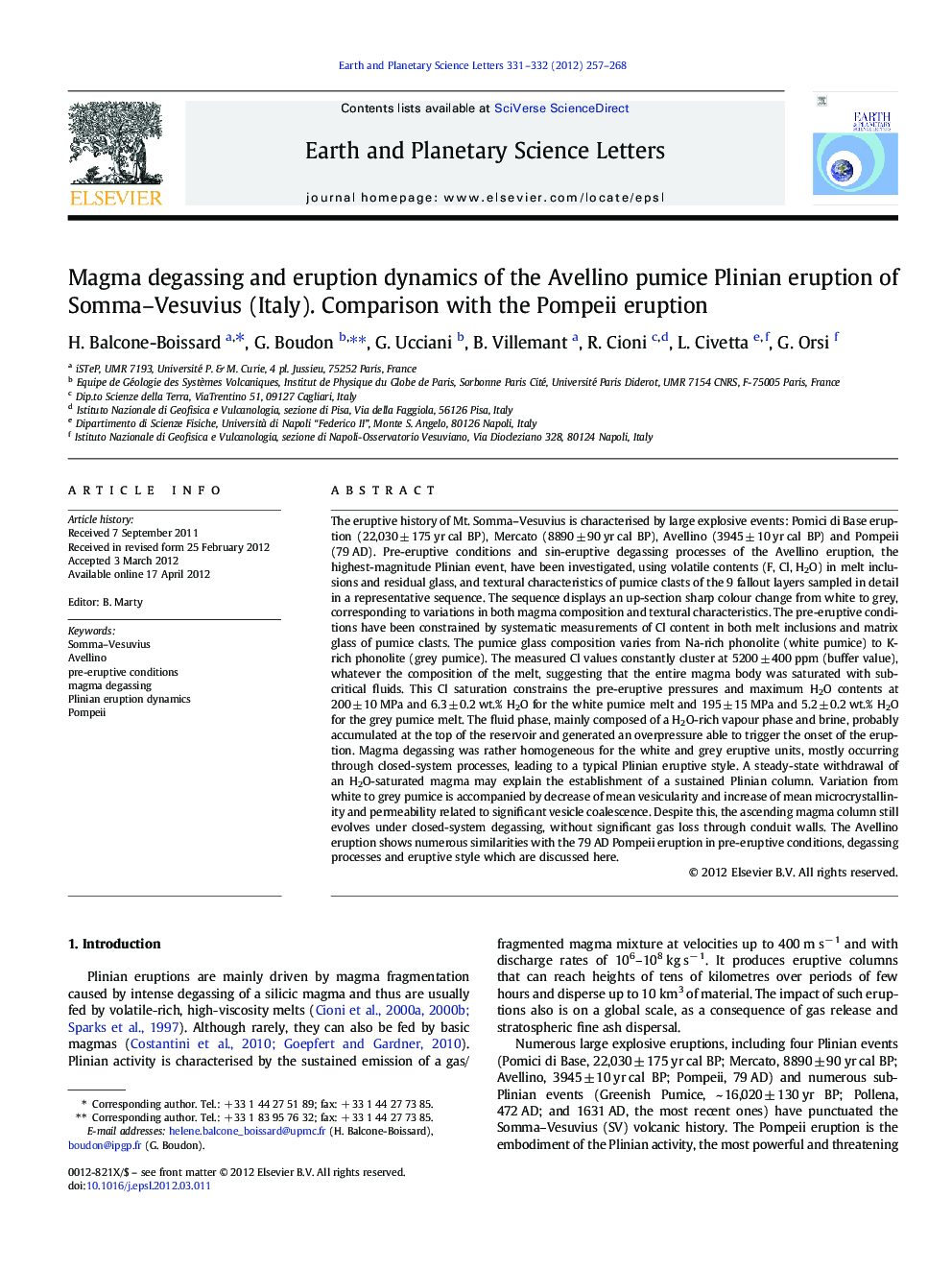| کد مقاله | کد نشریه | سال انتشار | مقاله انگلیسی | نسخه تمام متن |
|---|---|---|---|---|
| 4677489 | 1634805 | 2012 | 12 صفحه PDF | دانلود رایگان |

The eruptive history of Mt. Somma–Vesuvius is characterised by large explosive events: Pomici di Base eruption (22,030 ± 175 yr cal BP), Mercato (8890 ± 90 yr cal BP), Avellino (3945 ± 10 yr cal BP) and Pompeii (79 AD). Pre-eruptive conditions and sin-eruptive degassing processes of the Avellino eruption, the highest-magnitude Plinian event, have been investigated, using volatile contents (F, Cl, H2O) in melt inclusions and residual glass, and textural characteristics of pumice clasts of the 9 fallout layers sampled in detail in a representative sequence. The sequence displays an up-section sharp colour change from white to grey, corresponding to variations in both magma composition and textural characteristics. The pre-eruptive conditions have been constrained by systematic measurements of Cl content in both melt inclusions and matrix glass of pumice clasts. The pumice glass composition varies from Na-rich phonolite (white pumice) to K-rich phonolite (grey pumice). The measured Cl values constantly cluster at 5200 ± 400 ppm (buffer value), whatever the composition of the melt, suggesting that the entire magma body was saturated with sub-critical fluids. This Cl saturation constrains the pre-eruptive pressures and maximum H2O contents at 200 ± 10 MPa and 6.3 ± 0.2 wt.% H2O for the white pumice melt and 195 ± 15 MPa and 5.2 ± 0.2 wt.% H2O for the grey pumice melt. The fluid phase, mainly composed of a H2O-rich vapour phase and brine, probably accumulated at the top of the reservoir and generated an overpressure able to trigger the onset of the eruption. Magma degassing was rather homogeneous for the white and grey eruptive units, mostly occurring through closed-system processes, leading to a typical Plinian eruptive style. A steady-state withdrawal of an H2O-saturated magma may explain the establishment of a sustained Plinian column. Variation from white to grey pumice is accompanied by decrease of mean vesicularity and increase of mean microcrystallinity and permeability related to significant vesicle coalescence. Despite this, the ascending magma column still evolves under closed-system degassing, without significant gas loss through conduit walls. The Avellino eruption shows numerous similarities with the 79 AD Pompeii eruption in pre-eruptive conditions, degassing processes and eruptive style which are discussed here.
► New highlights on the Avellino eruption, one of the major Plinian events of Vesuvius.
► Detailed comparison between Avellino and Pompeii eruptions.
► Pre-eruptive conditions in terms of pressure, depth and H2O-saturation of melts.
► Geochemical data correlated with textural observations on selected pumice clasts.
► Degassing model fully explaining geochemical and textural data.
Journal: Earth and Planetary Science Letters - Volumes 331–332, 15 May 2012, Pages 257–268